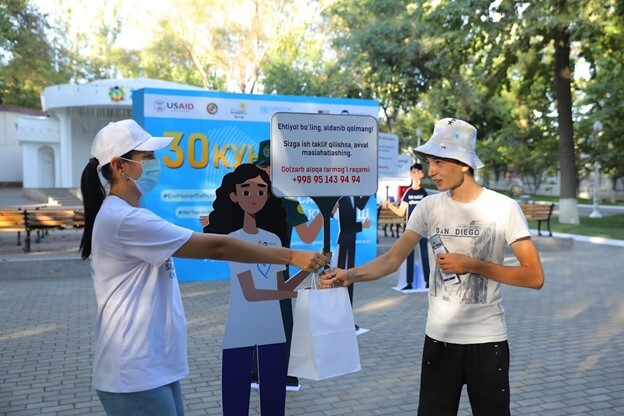 The USAID Safe Migration Activity marked World Day Against Human Trafficking on July 30, 2021, with a photo zone event at Central Park in Tashkent, in which it and its partners placed cutouts of animated heroes informing passersby about human trafficking. Photo: Gennadiy Nesterenko
The State Department estimates that at any given moment, a staggering 27.6 million people are victims of human trafficking. These victims come from all walks of life – all ages, genders, and nationalities. Yet, only a fraction of these people are identified and connected to resources needed to recover from this crime. A UNODC study found that women and girls make up 79% of trafficking victims, with 78% subject to sexual exploitation. However, boys, the fastest growing group of victims especially in labor trafficking, are often overlooked entirely.
While laws against trafficking in persons are more common in the past 20 years and prosecutions for these offenses have increased, it remains a challenging issue. According to 3ie's Human Rights Evidence Gap Map, there's limited evidence on how to effectively investigate and prosecute traffickers, prevent trafficking in the first place, or help victims recover. The Trafficking Victims Protection Act, passed in 2000 and reauthorized in 2018, sets clear priorities for the U.S. to fight trafficking. This includes making sure U.S. government funding doesn't support trafficking, training officials like airport staff to identify victims, and developing strategies to prevent trafficking altogether.
Much work remains to be done to establish evidence for the most effective Countering Trafficking in Persons (C-TIP) practices, and building knowledge and practice of activities that have shown success is a valuable step in improving our understanding of how to approach this persistent challenge. In this Month’s Learning Digest we explore three promising approaches that help actualize the USAID’ Policy on C-TIP:
- The Power of Local Partnerships
- Why Awareness Matters in the Fight Against Trafficking
- From Silos to Synergy: How Collaboration Stops Trafficking
Please make use of DRG Evidence and Learning Team resources and check out previous Learning Digests editions! (See text box at the end.)
The Power of Local Partnerships
Local civil society organizations (CSOs) (including community-based organizations, non-governmental organizations, faith-based CSOs, and social movement organizations and networks) have the power to make C-TIP programs effective in addressing trafficking in persons given their local knowledge, understanding of context, and connections in the community. A recent study investigating how to create better human trafficking awareness campaigns found that local partners get the message out about trafficking prevention and how to identify victims, offer crucial services to help victims heal and reintegrate into society, and advocate for strong anti-trafficking laws and ensure victims get the justice they deserve. It is critical to collaborate with community-based organizations to develop these campaign messages to ensure they are relevant, realistic, and build empathy. Additionally, research from Kenya highlights how strong CSOs are better able to build trust and confidence with security actors, which is essential for catching traffickers. Development practitioners should help these local groups build their own expertise in fighting trafficking and integrate anti-trafficking efforts into their existing work.
Local civil society organizations work in a variety of areas related to trafficking in persons, such as migration, labor rights, child protection, and women’s empowerment. Leveraging this complementary expertise can play a critical role in preventing more people from becoming victims in the first place. In particular, coordinated community-based efforts have been highly effective in addressing vulnerabilities that would make people more likely to become victims of trafficking in persons. In Nepal, local organizations have set up transit homes near border checkpoints and successfully intercepted and assisted victims of trafficking in persons and provided skills training with survivors of trafficking to assist with their reintegration into society and prevent future vulnerability to exploitation by traffickers.
In addition, working with community-based organizations and local civil society can help to ensure that activities are contextually relevant, improving their efficacy. A study on Community-Based Surveillance/Vigilance Mechanisms Against Human Trafficking in Nepal found that a community-based, victim-centered, and trauma-informed approach helps survivors feel safe and supported on their road to recovery. Applying this trauma-informed approach to programming has been effective in improving survivors’ feelings of safety and confidence in reintegrating after experiencing trafficking.
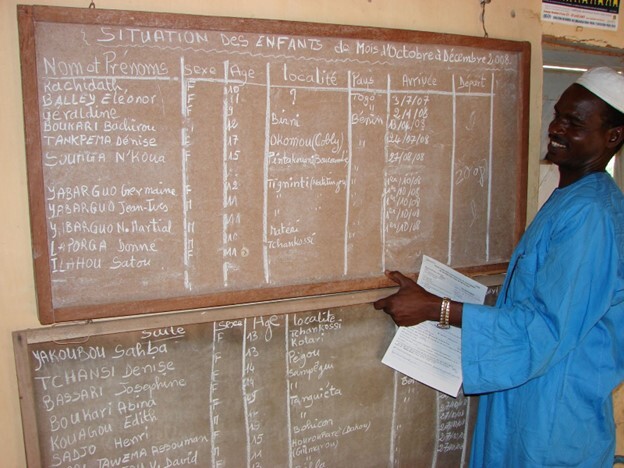 Educator Jean Djabo Biaou keeps a record of children rescued from child trafficking who arrive at the USAID and UNICEF-funded transit and reinsertion center Le Bon Samaritain in Natitingou. Photo: Anita Khemka (USAID/Benin)
Why Awareness Matters in the Fight Against Trafficking
Imagine a world where people can't be tricked or forced into slavery. Public awareness is a key weapon in this fight, and it's not just about educating the public. For example, USAID’s assessment of C-TIP in Timor-Leste noted a critical need for awareness raising with the public, as well as religious leaders, policymakers, technocrats, and bureaucrats. It's about empowering everyone to play a role in preventing trafficking and helping victims.
Here's how awareness fuels all four pillars of the U.S. Government’s C-TIP strategy:
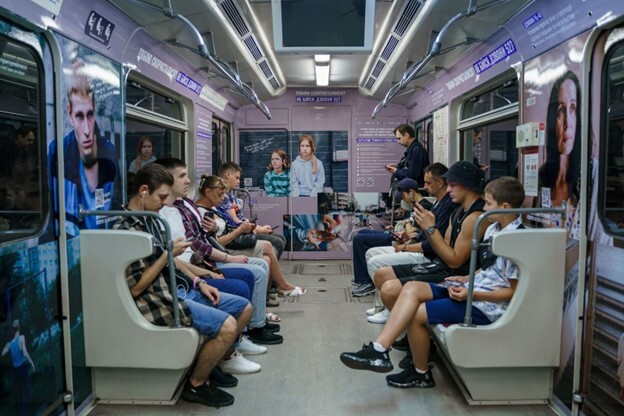 Traffickers have targeted Ukrainians for decades, but Russia’s brutal war has made millions of Ukrainians more vulnerable to this crime. USAID, in partnership with International Organization of Migration (IOM) Ukraine, decorated carriages on the Kyiv metro with campaign materials to highlight the signs and risks of human trafficking, as well as resources to turn to for help. Launched on World Day Against Trafficking in Persons Day, this campaign reached over 450,000 Ukrainians, and the IOM-supported counter-trafficking hotline saw a 24% increase in calls after its launch. Photo: Roman Shalamov
In order to reach vulnerable people, public awareness campaigns must be properly targeted. In some contexts, successful awareness raising efforts work through a variety of community locations and services, such as health clinics, schools, and government offices. Where literacy is low, infographics or visuals can help to convey information. An outcome evaluation in Tanzania found that a television program was effective in improving secondary indicators that can lead to trafficking, such as reducing truancy, generating positive attitudes toward gender equality, and expanding women’s empowerment. In other instances, social media has been used to spread awareness. One study in Nepal found that successful awareness-raising campaigns tailored messaging and format to the intended audience. For example, messaging targeted toward women had to account for the fact that women have less access to print media than men. These examples demonstrate that well-designed public awareness campaigns, employing a range of communication strategies, can achieve positive outcomes when they are adaptable and utilize diverse methods to reach the specific needs and circumstances of their target audience.
From Silos to Synergy: How Collaboration Stops Trafficking
TIP doesn't respect borders – it can happen anywhere, and it takes everyone working together to stop it. That's why collaboration between different agencies and countries is a major theme of the U.S. Government’s approach to combating trafficking in persons. Additionally, the 2023 Trafficking in Persons report highlights partnerships for their critical role in combating trafficking in persons. Within countries, this can include coordination between law enforcement, social service providers, public health professionals, and faith-based community organizations. The engagement and cooperation across these actors in an ecological approach is critical to identifying people who have been trafficked and helping them reintegrate into society. While prosecution and punishment of offenders is often most emphasized, supporting victims requires a robust system of identification and a strong safety net to ensure their successful reintegration and protect them from further victimization. This may require strengthening capacities of countries to improve existing measures of enforcement mechanisms.
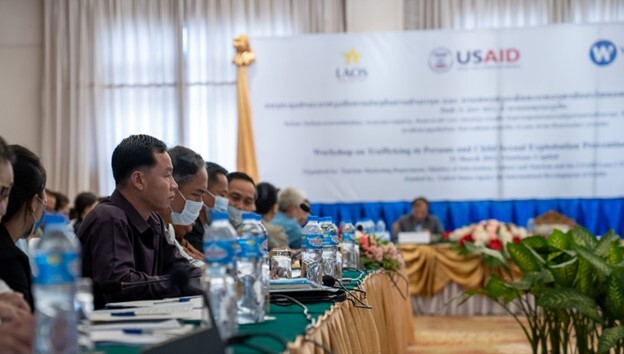 In Laos in 2021, USAID partnered with the Ministry of Information, Culture, and Tourism, convening stakeholders in the tourism sectors including travel agencies, restaurants, karaoke bars, and businesses to discuss roles they can play to counter trafficking in persons. Photo: USAID Laos
While collaboration is powerful, it's not always easy. Different agencies might have different priorities and bureaucratic hurdles that can slow things down. A simulation conducted by the Organization for Security and Co-operation in Europe (OSCE) found that people from different backgrounds/agencies often struggle to see the bigger picture and understand how their roles fit together. A successful multi-agency response requires time and a commitment to a shared operating framework; successful multi-agency initiatives can conduct awareness raising activities, conduct joint training, ensure information exchange, and develop local strategies and action plans.
The U.S. Embassy in Liberia partnered with the Ministry of Labor's National Human Trafficking Task Force, which included government and civil society members, to achieve incredible results. Together, they:
- Repatriated 100 trafficked young women from Oman.
- This resulted in the prosecution of a government official who was involved in trafficking in persons, and
- The task force built safe homes and provided services for the repatriated women.
This is just one example of the power of collaboration. By working together, we can dismantle trafficking networks, support survivors, and create a safer world for everyone.
Further Assistance
USAID’s DRG Bureau’s C-TIP team is available to provide technical assistance to USAID Missions which includes but not limited to C-TIP assessments and analyses, program design, C-TIP integration across sectors, and Country Development Cooperation Strategies -- just to name a few. Feel free to reach out to the C-TIP team to learn more about their technical assistance, programming, and funding mechanisms at ctip@usaid.gov.
DRG Learning Events

Use Our Resources!
Welcome to the DRG Learning Digest, your one-stop shop on the latest research and resources in democracy, human rights, and governance (DRG). Views expressed in the external (non-USAID) publications linked in this Digest do not necessarily represent the views of the United States Agency for International Development or the United States Government.
-
News and Updates: Check out past issues of the digest and explore DRG-related events and resources on DRGLinks.
-
Learning Tools:
-
Monthly Themes: Each month, the DRG Bureau shares resources based on upcoming international days. Look out for Fireside Chats to discuss these resources and share experiences with other practitioners.
-
Want to get involved?
- Contribute your ideas for monthly themes or Fireside Chat topics
- Other suggestions? Please reach out to drg.el@usaid.gov
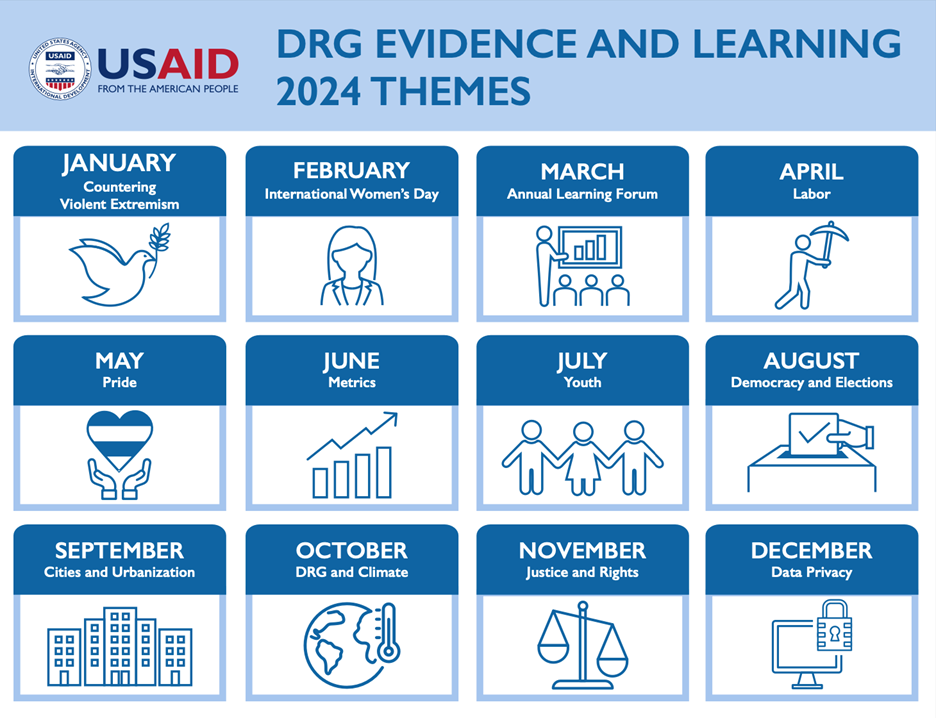
We welcome your feedback on this newsletter and on our efforts to promote the accessibility, dissemination, and utilization of DRG evidence and research. Please visit the DRG Bureau's website for additional information or contact us at DRG.EL@usaid.gov.
|